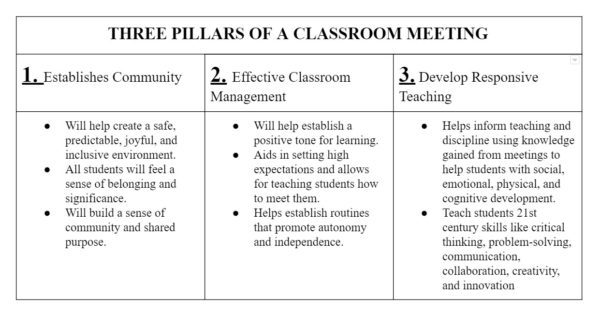Last year I implemented classroom meetings once a week with my 6th-grade classroom. My experience began by doing a lot of research on the topic. There were several formats to select from and even more opinions on the effectiveness of using valuable class time to hold them.
The ideas behind the purpose range from meeting the social and emotional needs of the student to covering the daily agenda of classroom activities. I use the power of a class meeting to help students feel welcome, safe, and as an activity that allows their voices to be heard.
When I first heard about the advantages of a classroom meeting I almost couldn’t believe it. I thought, “who has time to do all that?” I gave myself permission to use 30 minutes every Wednesday to conduct morning meetings. Initially, I decided to focus on one question. I gave them a survey asking: do you feel respected and safe at school?
Many students shared the same concern – their perspectives on lack of respect in their lives.
Over the course of the school year these meetings helped my students reflect on improving their individual strengths in relationships, socially, emotionally, and academically. Needless to say, I became a classroom meeting believer!
This year I teach 7th-grade math and I have students for a short 58 minute period. I decided the most I could dedicate was 15 minutes once a week. I began by discussing classroom meeting norms. The students viewed this as a team effort and agreed to abide by norms during the meeting. I relayed that their voice is just as valuable as mine.
This struck a chord with many students because some students felt they didn’t have value. During the next meeting, I played a motivational video that relayed the message that everyone has value. Each week the meeting agenda is shaped to fulfill each group’s needs.
My consensus is that classroom meetings either done daily, weekly, or less often are essential in helping students grow academically, socially, and emotionally.
The three reasons below motivate me to always use the ever-evolving model of a class meeting. My only advice is to shape the meeting to best fit the needs of your students. Additionally, the use of meetings in Washington state connects appropriately with the social and emotional learning standards.
There still isn’t a prescribed format that you will find, but I hope the sources below will help guide you in creating the best classroom meeting for your students.

